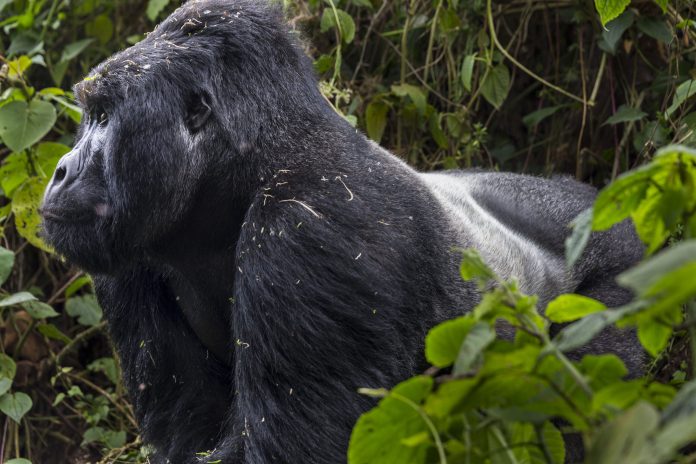Conservation Through Public Health (CTPH) is an innovative Ugandan non-profit organization established in 2003 by Dr. Gladys Kalema-Zikusoka, Lawrence Zikusoka, and Stephen Rubanga. The CTPH offices are located in Buhoma sector Bwindi Impenetrable National Park. The organization is committed to supporting the conservation of biodiversity through enabling people, gorillas and other species to coexist in their protected areas through improved health and livelihoods.
Initiatives of Conservation Through Public Health
One health approach
CTPH operates on a “One Health” paradigm acknowledging the interdependence of humans, animals and environmental wellness. This interrelated approach unites veterinarians, medical and public health experts, and conservationists to address issues related to health. CTPH’s goal is to develop ecologically sound solutions which help individuals as well as animals through conservation of wildlife, public health and alternative sources of income. This approach has Prevented the transmission of diseases across species and has promoted sustainable coexistence.
Community Engagement and Empowerment
The involvement of the local communities is one of the essential aspects of CTPH’s strategy. In order to educate the community members to provide integrated wellness and conservation education, the organization established Village Health and Conservation Teams (VHCTs). Teams like these promote a sense of accountability amongst community members through campaigns regarding reproductive health, health, hygiene, and conservation awareness.
Conservation Through Public Health (CTPH) also established Gorilla Conservation Coffee, a charitable organisation which supports local coffee farmers by offering them highest prices to produce Arabica coffee in an attempt to increase earnings and reduce dependence on forest products. This initiative has promoted the preservation of gorilla habitats as well as increasing community revenue.
Monitoring and Research
 CTPH developed the Gorilla Health and Community Conservation Centre near Bwindi Impenetrable National Park. The center is where gorilla health is monitored by fecal sample analysis. This facility also acts as a hub for community engagement, teaching, and research. This has therefore increased the connection between conservation initiatives and the health of the community.
CTPH developed the Gorilla Health and Community Conservation Centre near Bwindi Impenetrable National Park. The center is where gorilla health is monitored by fecal sample analysis. This facility also acts as a hub for community engagement, teaching, and research. This has therefore increased the connection between conservation initiatives and the health of the community.
The operation of CTPH is carried out in several parts of Uganda and some of these include;
Bwindi Impenetrable National Park
In this region, Conservation Through Public Health (CTPH) prioritizes community wellness and mountain gorilla conservation. This is done through the initiatives that were established by the organisation.
Queen Elizabeth National Park
Conservation Through Public Health (CTPH) established Queen’s Pavilion Telecentre in 2007 with support from the British High Commission. This facility is located along Crater Drive and serves as a visitors information center and digital portal to the local community through offering computer training and internet connection. The Telecentre empowers local communities like Kamukungu and Kikorongo through increasing their participation in conservation activities and encouraging sustainable lifestyles.
CTPH collaborates with the Uganda Wildlife Authority (UWA) to monitor and control infectious diseases within Queen Elizabeth National Park. The organization encourages prompt detection and responses to potential outbreaks by regularly checking animals like buffaloes for diseases like anthrax and Rift valley fever. CTPH also educates park rangers about wildlife health monitoring.
Pian Upe Wildlife Reserve
Conservation Through Public Health (CTPH) started operations in Pian Upe in 2013 following “One Health” theology which emphasizes mutual dependence among human, animal, and ecological health. CTPH with financial help from the French Embassy’s Social Development Fund trained Conservation Community Animal Health Workers (CCAHWs) in collaboration with the District Veterinary Officer.
These community volunteers play a pivotal role in promoting conservation awareness and public health education, improving livestock health and husbandry methods and establishing early warning systems to avoid disease transmission between livestock, wildlife, and humans.
Mount Elgon National Park
CTPH introduced the Village Health and Conservation Teams (VHCTs) approach in the Mount Elgon region in districts like Bukwo, Kween and Bulambuli. This approach integrates health, conservation, and sustainable livelihoods to promote an extensive plan known as the Population, Health, and Environment (PHE) model. CTPH trained these VHCTs working together with the stakeholders so as to deliver essential amenities directly to homes, such as family planning, hygiene education, and conservation awareness.
These teams are also responsible in collecting monthly data on health and conservation indicators, that helps in decision-making and adaptive management. CTPH also established Village Savings and Loan Associations (VSLAs) within each community so as to ensure the longevity and self-sufficiency of these initiatives. These associations provide financial services and also support income generating activities such as livestock rearing and sustainable agriculture.
Note:
CTPH’s broad approach shows that improving people’s wellbeing and livelihoods is very crucial for animal conservation. CTPH has helped to increase the endangered mountain gorilla population through engaging communities, expanding health, and creating long-term economic prospects.












